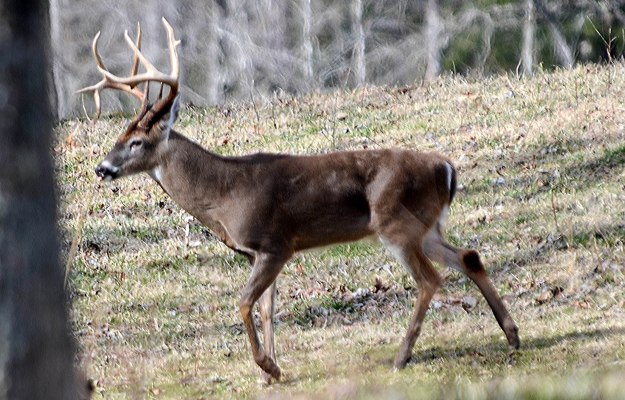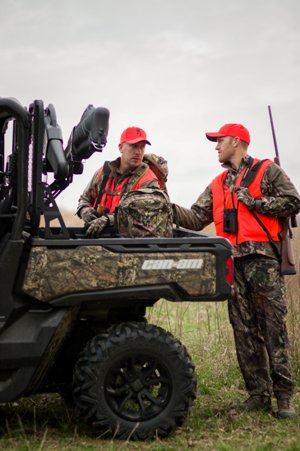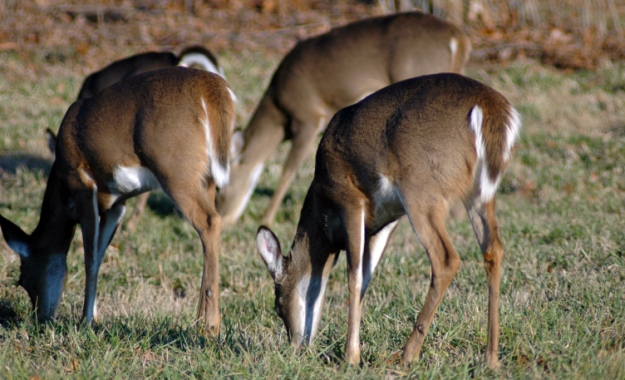
Editor’s Note: Bill Gray, a longtime wildlife biologist and supervising biologist for District IV for the State of Alabama, gives us insights on why deer hunters in Alabama have such a liberal deer season and can harvest 121 deer per season.
Before we instituted a February deer season throughout the State of Alabama, we saw from our data that we were having a lot of late deer breeding, especially in south Alabama. Alabama’s Department of Conservation and Natural Resources Wildlife Section wanted to offer a deer season that encompassed the entire rut in the State of Alabama, especially in south Alabama, where our research indicated deer had a very late breeding season. We had the science to support the establishing of a late deer season in Alabama. To give our hunters in south Alabama the opportunity to hunt during the deer rut, we recommended a February 10-day season in south Alabama only, which was and is one of the most heavily deer populated parts of the state. This region is also made up of a large number of private land holdings and is sparsely populated. All the elements necessary to maintain a large deer population are present in south Alabama. Too, many big tracts of land in south Alabama are family owned and often seldom hunted. So, relatively few deer are harvested each year out of this region – all reasons for why the state first implemented a February deer season in south Alabama.
This is the third year that South Alabama has had a February deer season. So far, we haven’t seen that the longer season has had any impact at all on the number of deer taken south of Highway 80. Until Game Check became mandatory in the 2015/2016 season, hunters didn’t have to report the number and size of bucks they harvested each year. So, we didn’t have a yardstick to measure the effects of the February deer season in south Alabama. Since we only have one year’s worth of data, we want to wait until we possibly have 3-4 years of data to tell us the effects of the February deer season.
 The State’s best estimated guess of the number of deer in the State of Alabama is between 1.3 million and 1.5 million. If you look at the deer harvest every year that we’ve had a buck limit, we may very well have had close to 2 million deer. I don’t have any data to prove this, because we didn’t see a dip in the number of deer being harvested when hunters could take a buck and a doe every day during deer season from October 15th until January 30th, but I think a good educated guess right now is that Alabama’s deer herd today is between 1.3 and 1.5 million.
The State’s best estimated guess of the number of deer in the State of Alabama is between 1.3 million and 1.5 million. If you look at the deer harvest every year that we’ve had a buck limit, we may very well have had close to 2 million deer. I don’t have any data to prove this, because we didn’t see a dip in the number of deer being harvested when hunters could take a buck and a doe every day during deer season from October 15th until January 30th, but I think a good educated guess right now is that Alabama’s deer herd today is between 1.3 and 1.5 million.
We also started instituting antler restrictions on several of our Wildlife Management Areas(WMAs) a few years ago, including the two south Alabama WMAs I oversee - Geneva State Forest and Barbour WMA, both in District IV. I also know that some other WMAs have instituted the 3-point antler restriction on one side that we have in the two large WMAs I oversee.
In the 1999/2000 deer season, the state began an antler restriction program that stated that a hunter could not harvest a buck, unless that buck had 3 points on one side of his rack. The results we've seen is that there has been an increase in the harvest of 2-1/2-year-old bucks and older. We've also seen a greater harvest in 3-1/2-year old and older bucks than we had before the antler restriction was imposed. As you may expect, we've also seen a great reduction in the number of 1-1/2-year-old bucks being harvested.
After the fifth and eighth years of antler restriction on Barbour WMA, we surveyed our hunters for hunter satisfaction. We learned that the support for the 3 points on one side of the buck’s rack had more support from our hunters than the support we had when we first proposed an antler restriction on this WMA. This information let us know that the hunters really liked having the antler restriction on Barbour WMA.
I'm often asked, “Will antler restrictions be imposed on all WMAs in Alabama?” To be honest, I don’t make those kinds of decisions. We do believe that for antler restrictions to be effective, the WMA needs to be able to control a large amount of land. Also, the hunters who hunt that WMA need to be surveyed to find out if they want an antler-restriction program. If our survey shows that hunters don’t want antler restrictions, then we probably won’t institute it. But if the survey comes back and indicates that hunters do want an antler restriction on certain WMAs, then that’s the beginning point to do more research about the possibilities of imposing antler restrictions on more public lands in Alabama. Deer hunters of Alabama are the customers of Alabama’s Department of Conservation and Natural Resources Wildlife Section. Our job is to try and help produce the type of deer-hunting experience the most hunters who hunt each individual WMA prefer.
Day 3: Alabama’s Jackson Woodson Goes on a Buck Diet and Doe Feast Plan
Tomorrow: Biologist Bill Gray on Types of Deer Management for Private and Public Lands






























